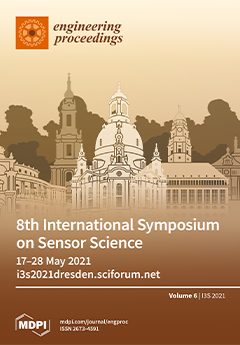Heat-exposed work activities or prolonged sport sessions suppose a continuous nutrient loss through sweating, leading to long-term health issues. Among prevention steps, the use of miniaturized sensors for real-time monitoring of micronutrient presence directly in sweat can be of great interest. Here, we propose a flexible sensor for the detection of vitamin C (ascorbic acid) based on a very simple process of electrode modification via electrodeposition of a membrane containing CuO nanoparticles. The reductive effect of ascorbic acid on the nanoparticles produces a shift of the redox peaks in cyclic voltammetry analysis, which can be measured at nearly zero volts as a current increase by amperometry. The detection is performed efficiently at the micromolar ascorbic acid levels found naturally in sweat and works at ultra-low potential (−5 mV), showing no interferences with other typical molecules found in the samples. In combination with sensors for other nutrients, this can be a promising approach for preventive healthcare applications.

Heat-exposed work activities or prolonged sport sessions suppose a continuous nutrient loss through sweating, leading to long-term health issues. Among prevention steps, the use of miniaturized sensors for real-time monitoring of micronutrient presence directly in sweat can be of great interest. Here, we propose a flexible sensor for the detection of vitamin C (ascorbic acid) based on a very simple process of electrode modification via electrodeposition of a membrane containing CuO nanoparticles. The reductive effect of ascorbic acid on the nanoparticles produces a shift of the redox peaks in cyclic voltammetry analysis, which can be measured at nearly zero volts as a current increase by amperometry. The detection is performed efficiently at the micromolar ascorbic acid levels found naturally in sweat and works at ultra-low potential (−5 mV), showing no interferences with other typical molecules found in the samples. In combination with sensors for other nutrients, this can be a promising approach for preventive healthcare applications.
